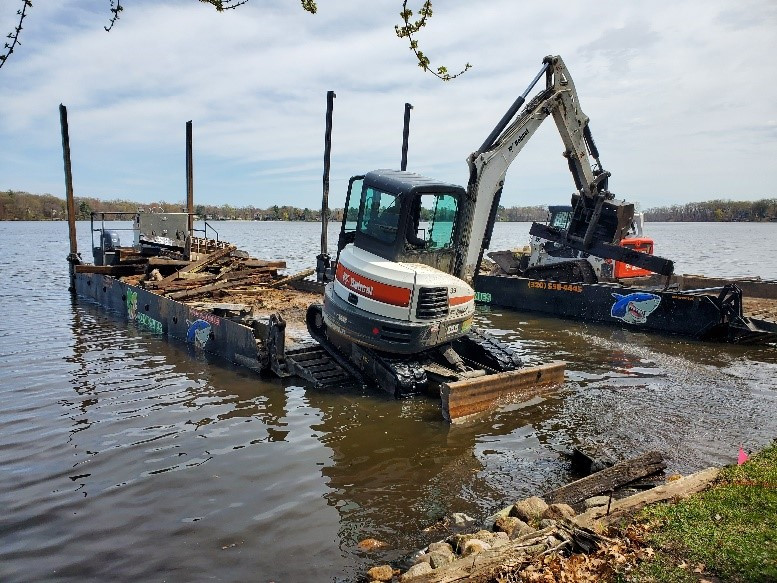New stormwater treatment is in place to benefit the Rum River, thanks to a collaborative effort by the City of St. Francis, ACD, and Upper Rum River Watershed Management Organization (URRWMO). While St. Francis has a strong network of stormwater ponds and other practices, certain areas of the city were built before stormwater treatment became the norm. We are "retrofitting" stormwater treatment into these older neighborhoods.
The most recent project is a rain garden installed on a city owned out-lot. Stormwater in this residential neighborhood drains directly to the Rum River. The new rain garden has a curbside inlet, allowing water into a basin that filters and infiltrates stormwater. The garden will hold water for no more than 48 hours. It will remove 44% of solids (111lbs/yr) and 46% (0.6 lbs/yr) of phosphorus from a two acre drainage area. The rain garden is planted with native shrubs, grasses, and wildflowers. We are hopeful this project results in other landowners wishing to have a rain garden on their property.
Another recent project was stabilizing a chronically eroding swale by the St. Francis High School. The swale receives runoff from a 10-acre area of the high school property and surrounding area. Runoff would then drain immediately to the Rum River, a few hundred feet away. The swale is stabilized and vegetated to prevent future erosion, even during larger storms. Both projects were grant funded through the Clean Water, Land, and Legacy Amendment. Matching funds were from the URRWMO. The City of St. Francis performs needed maintenance. For more information contact Jamie Schurbon, Watershed Projects Manager, at








